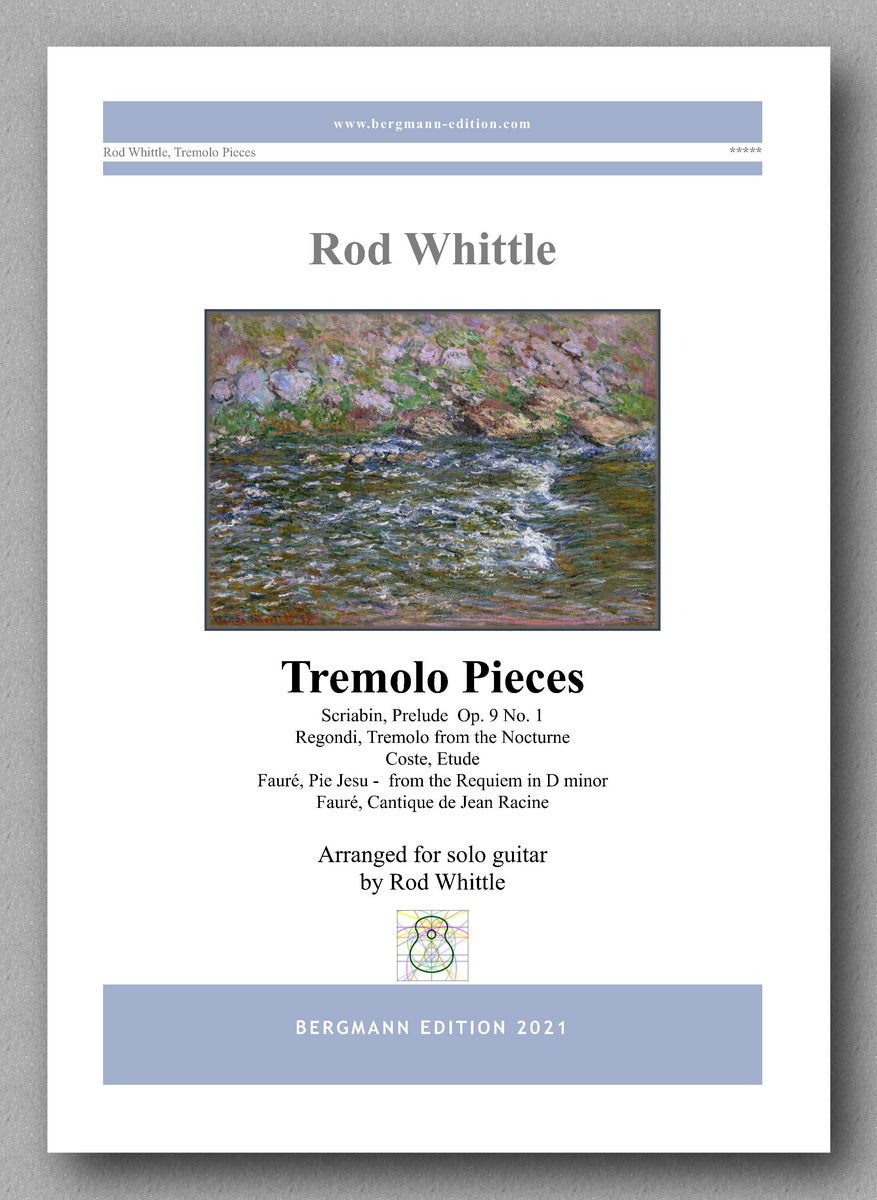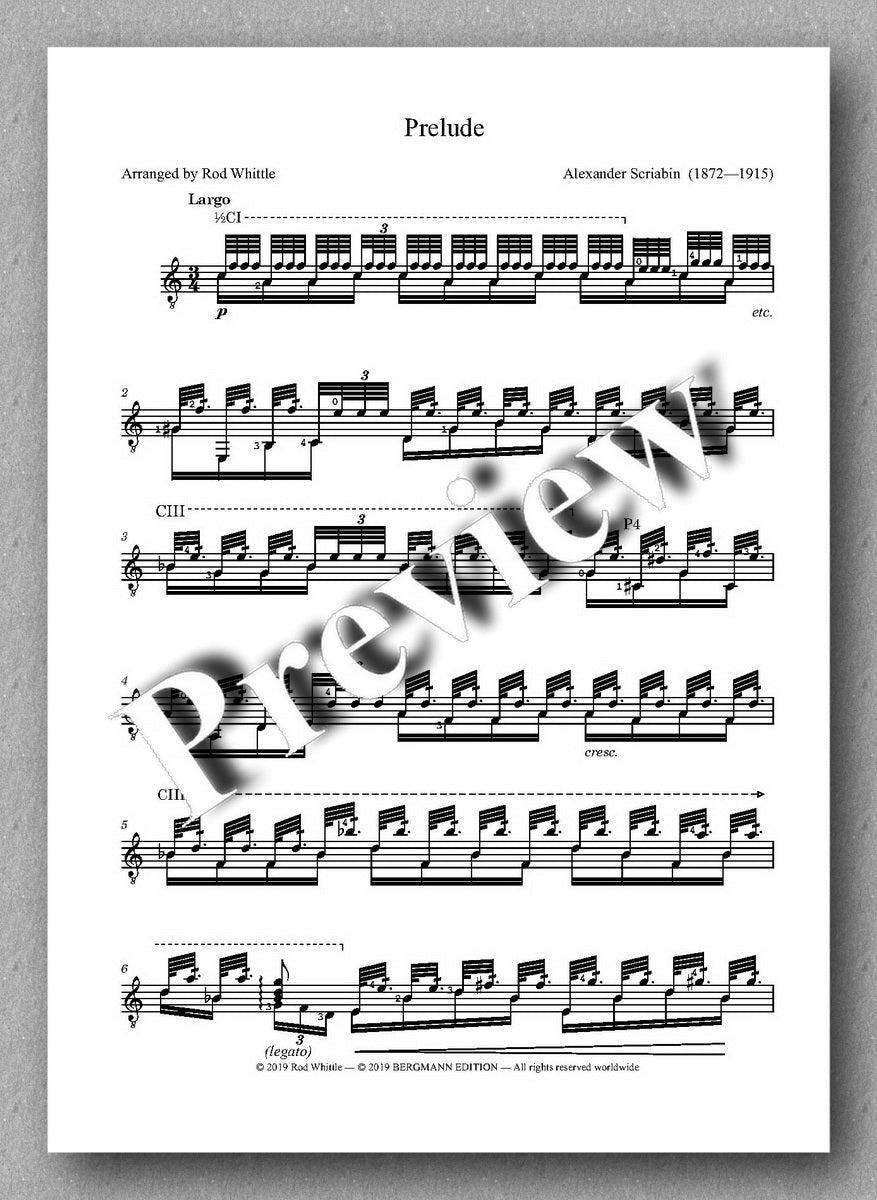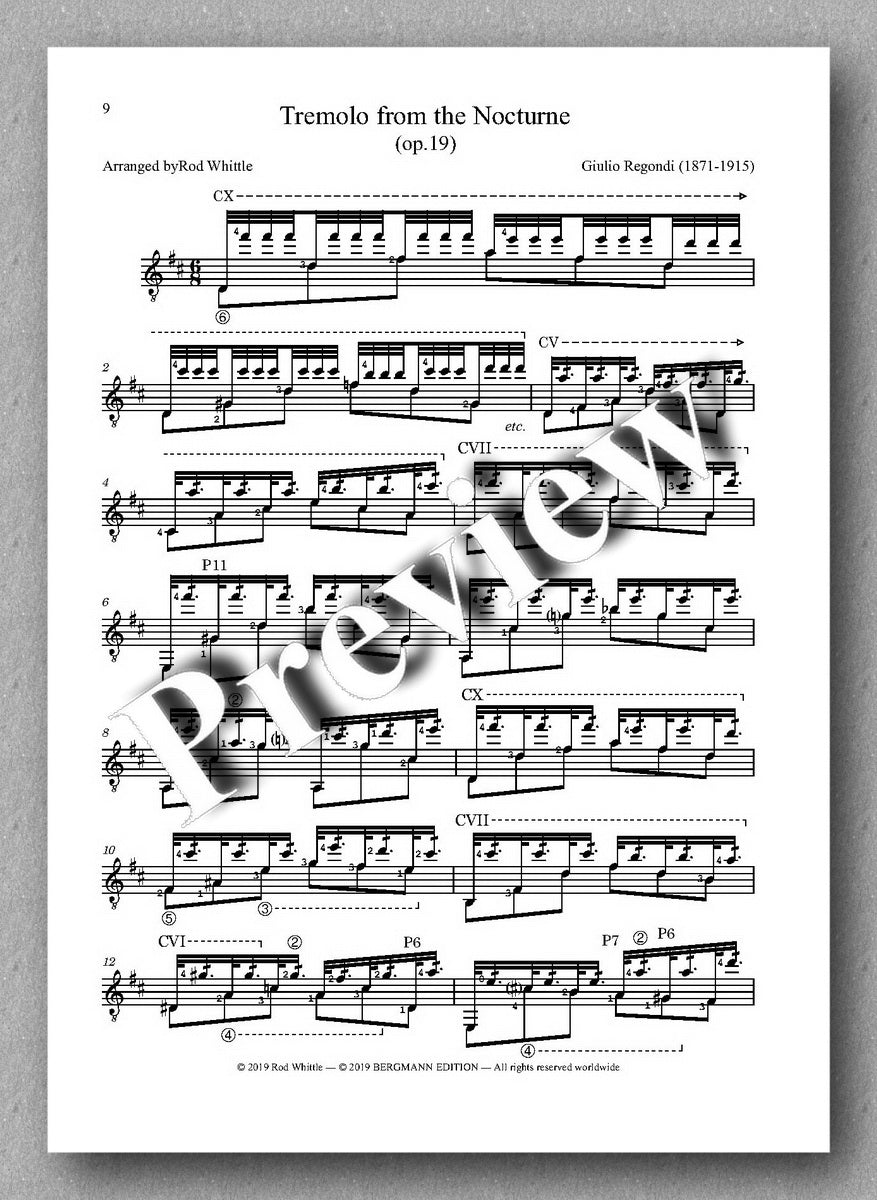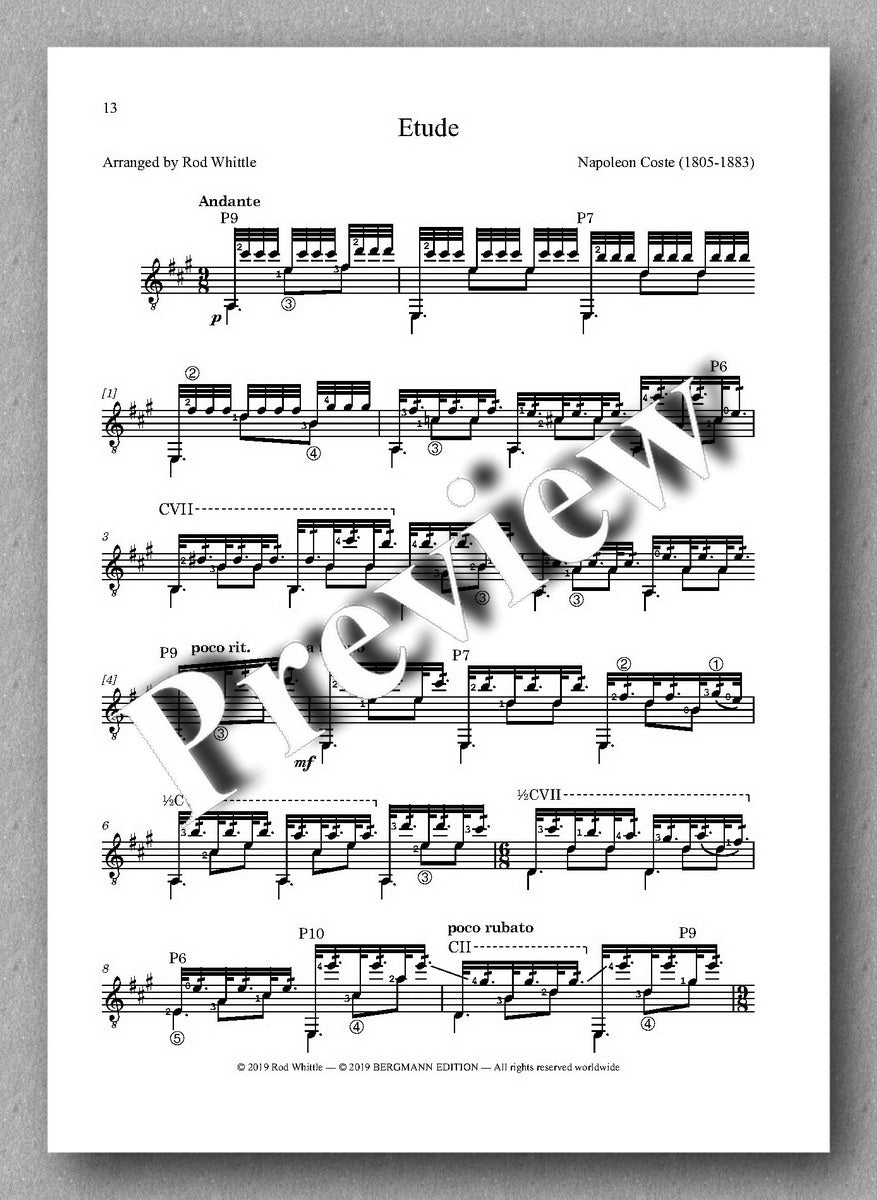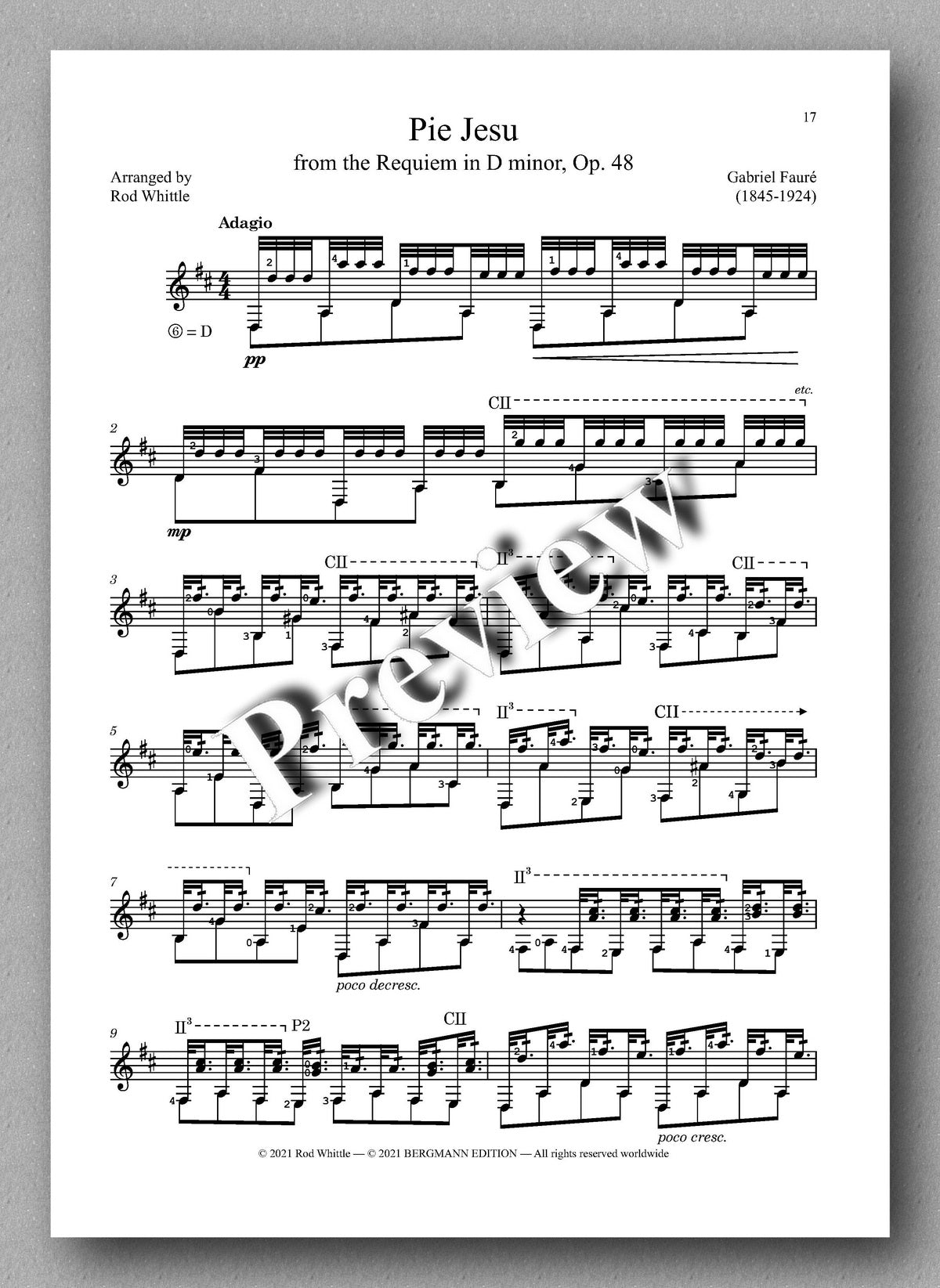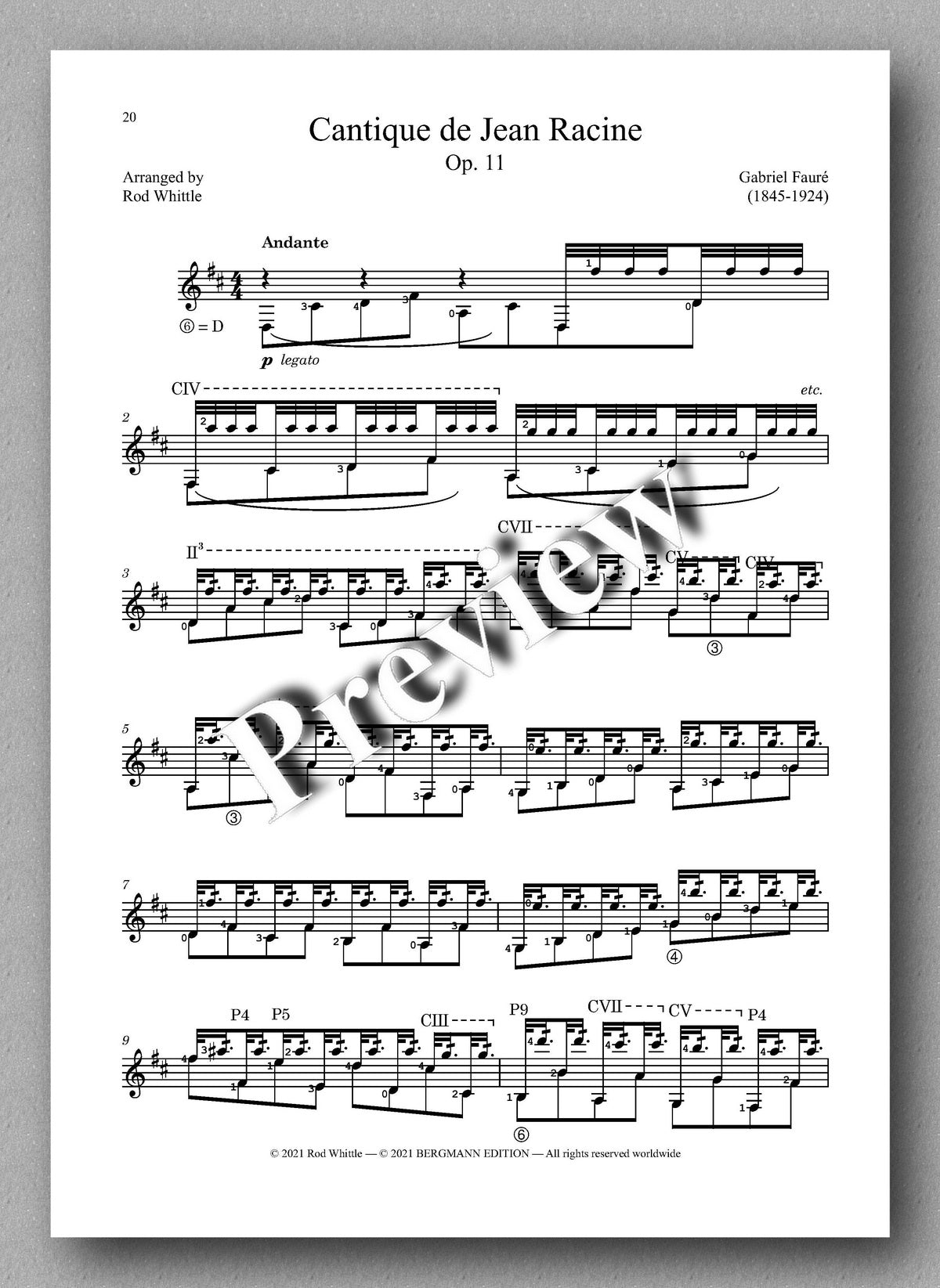Love it? Add to your wishlist
Your favorites, all in one place. Shop quickly and easily with the wishlist feature!
[title]
[message]Tremolo Pieces
Five tremolo pieces arranged for solo guitar by Rod Whittle.
ALEXANDER SCRIABIN (1872—1915)
The prelude (Op.9 No.1) is an early piece exhibiting Scriabin's melodic flair. Its form is a kind of condensed sonata – ABA with a coda. The 'B' section of roving, moderately distant harmonies, and the 'coda' with its binding bass line compliment the theme. The tremolo style highlights the fine counter melodies.
GIULIO REGONDI (1823—72)
The tremolo section of the Nocturne (op.19) - subtitled 'Reverie' – must be some of the most wonderful music written for tremolo guitar. In the Nocturne it is split between sections of different style and content, but its effectiveness as a piece is fully satisfied without these interspersed parts, nice as they are, and its persuasive theme quite naturally repeats to end with a superb coda (which also finishes the actual Nocturne).
NAPOLÉON COSTE (1805—1883)
Among his many guitar compositions are 25 etudes. This one, with its Chopin-like scalar meditation in the middle section, I found particularly pleasing. The etude was written in the normal way in a binary rhythm (2/4), but some melodies, as here, seem made to be combined with the irresistible lilt of three-time, and tremolo always brings an especially enhancing effect.
GABRIEL FAURÉ (1845—1924)
Fauré was a French composer and organist, and a distinguished teacher who taught composition to some of France's most famous musicians, including Ravel. He was also director of the Paris Conservatory for 15 years (1905 -1920). He wrote many songs and short piano pieces, and a number of longer orchestral works, among them 'Pavane', Ballade for piano and orchestra, and Requiem. At its heart, Fauré's music is the essence of French lyricism. Unforced and beguiling, its fine melodies and counter melodies invest the harmonic structures with subtle shifts to form a delicately balanced idiom.
The lovely themes and counterpoints of Pie Jesu and the Cantique de Jean Racine are well suited to the tremolo style.
Pie Jesu is from the Requiem in D minor, Op. 48, composed between 1887 and 1890.
The Cantique (Chant), Op. 11, was composed in 1865 when Faure was a nineteen-year-old student at the École Niedermeyer de Paris, winning him first prize. The text had been translated from a Latin hymn by Jean Racine in 1688.
